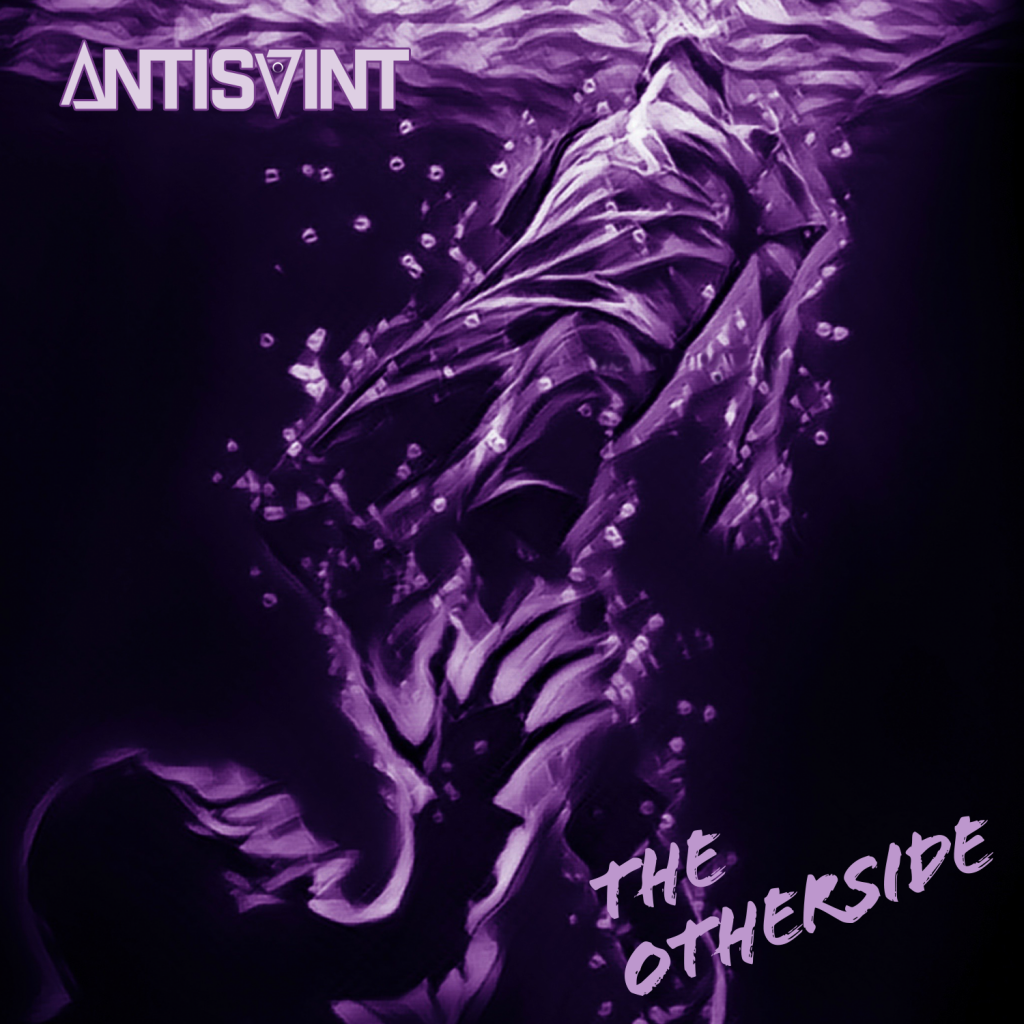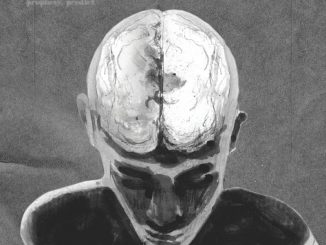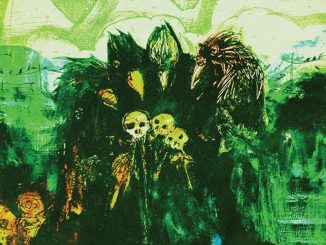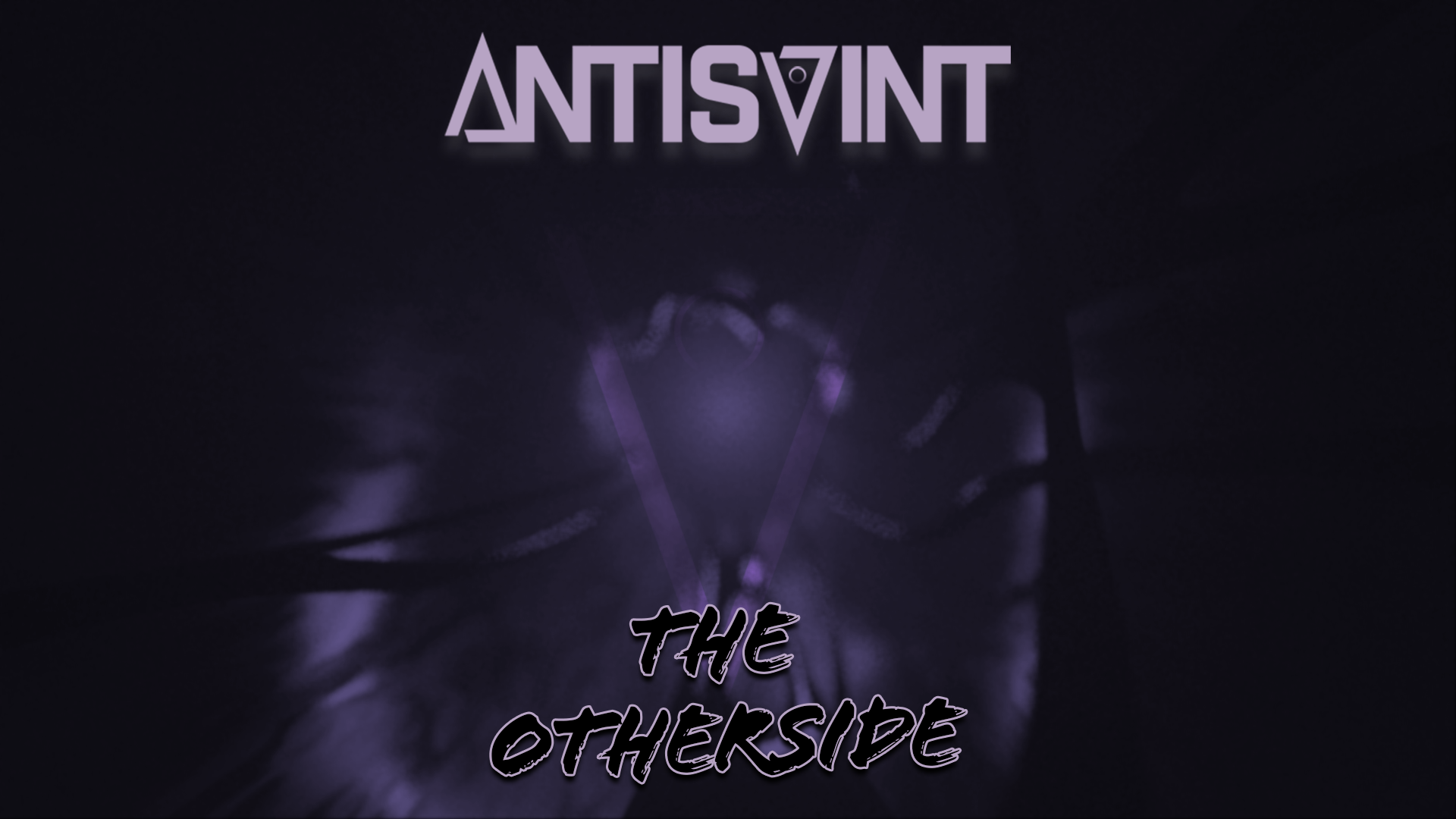
(Matt Whiteman – Vocals) We decided to change the name for several reasons. The first reason was due to our belief that this next step we’re taking with the band will be our defining moment, and in that moment, we do not want to be mistaken with an already known band by a similar name. There has been a lot of confusion by both people in the industry and fans between the two bands.
Another reason is the fact that Andrew and I were still in our youth and immature when we founded RTR, resulting in us just picking a name that sounded cool. We didn’t really care about what the name meant, we just wanted to play music. With us being older, our music has evolved, and we want to make a career out of it. We now have this opportunity to come up with something meaningful that both resonates with us on a personal level and within our music.
Finally, the name was being affiliated with things we do not condone or stand for. Between all of these reasons, the unfortunate pause due to the Covid-19 Pandemic, and an unreleased full-length album that sounds dramatically different from anything else we’ve done, it made perfect sense to rebrand and start from scratch.
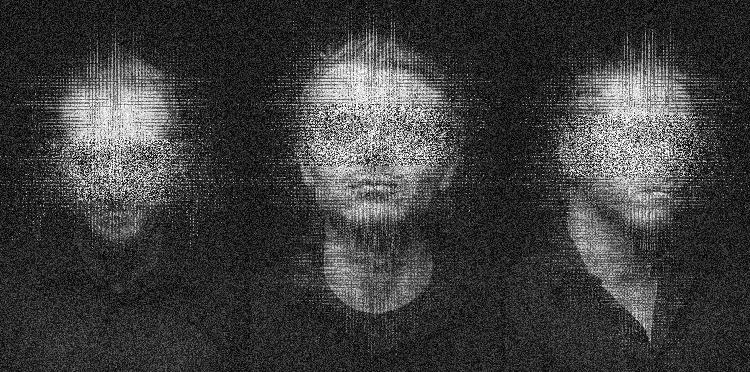
THE OTHERSIDE Re-recording: (Andrew Whiteman – Guitar) Prior to the decision to change our name we wanted to re-release a few songs from our record, The Rising, that were fan favorites that we hadn’t played in a long time. As a band, we’ve developed our sound and become much stronger musicians, so when we were playing these songs, they sounded dramatically different from the original recordings. The timing seemed right, with us not being able to release our newest full-length record yet, to give our fans an updated take on the songs as we put them back in our setlist.
THE OTHERSIDE Visualizer Video: (Matt Whiteman – Vocals)As for the visualizer, the concept of it is relatively simple. I wanted to create a space that seemed never ending with elements of horror. As the song goes on, the space becomes more constrained with the addition of the organic substance, veins, or whatever you would call them. I had gathered inspiration from the upside-down world in Stranger Things. With the concept put in place I only had to figure out how to execute it. My time in the Game Design Industry has introduced me to a lot of creative tools, one being the open source 3D modeling software, Blender.
The scene consists of three sections, each section has one outer tube and an inside one. The outer tube is a cylinder that was morphed using a cloud texture for geometry displacement. This creates the illusion of the scene expanding in and out. The inside tube is a duplicate of the outside tube that was further modified. Basically, I changed it into a wire frame and smoothed it out. For final touches I added a water shader to make it appear as if the inside tube was alive.
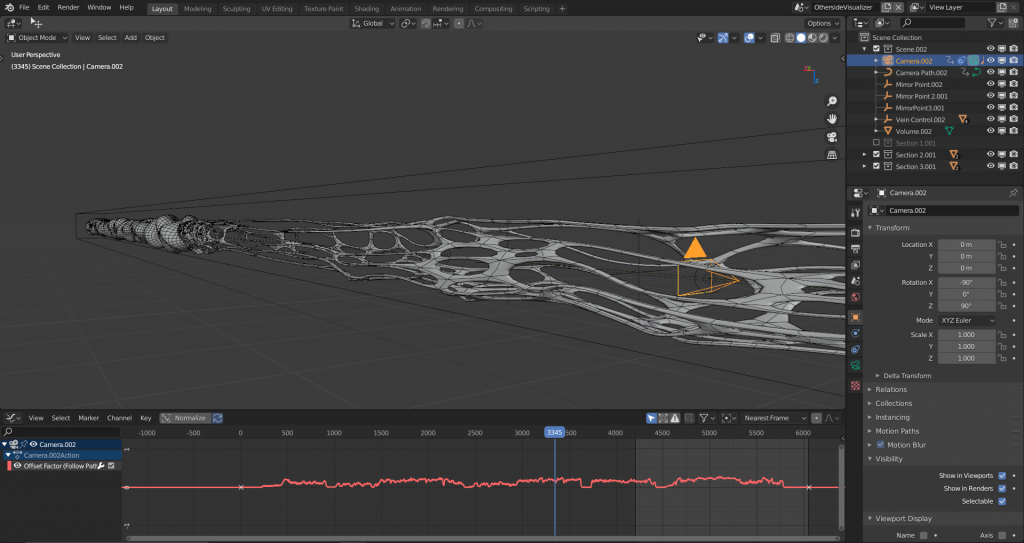
For post processing effects, I added some atmosphere to distort the view and placed lighting to create the purple glow. The last thing was moving the camera. The virtual camera is set up like a real one, it sits on a “crane” for movement. So, the base part of the camera crane moves along a track from the first section to the last in a consistent motion for the duration of the song. The crane part of the camera moves to the f curve of the song, so as the song changes in rhythm so does the camera movement. Together the movement hopefully creates the visualization of the song as this is a visualizer after all. With the scene done it was time to render which took about 20 hours with 4-6 computers. The process was a great experience and I think we have something unique for our fans and they can look forward to more in the future.
